By Jenny Ryder, Environmental Art & PR Intern
Enjoy our mobile field guide as you walk, hike and play in the fall forests. Wintertime has got me cherishing the bits of green left around the forest here at the Schuylkill Center. On our monthly staff walk the other day (after perhaps the last snowfall of the season), the white backdrop over our dips and hills made it easy to spot evergreens throughout the trails. Of course, our beloved and fragrant Pine Grove is thriving, and we shared knowledge about the kinds of conifers and other evergreens that live with us around here.
See other Field Guide posts here.
Eastern redcedar (Juniperus virginiana)
Despite its common name, eastern redcedar is actually a juniper tree, sometimes called a Virginia juniper. This one sits right outside the Visitor Center next to our solar panels at Fire Pond. Eastern redcedar is a native plant to the region, often one of the early colonizers of meadowlands.
In the colder months, this evergreen is actually quite red, while in the warmer seasons, the foliage turns a more vivid green. They smell so good but be careful, because this evergreen has little prickly bits at the base of their leaf clusters! Sometimes, this tree’s turned into incense and burned for ritual purification.
American Holly (Ilex opaca)
American Holly is pretty easy to identify, one of the most common evergreen varieties that isn’t a part of the pine family. Notice their spiny teeth, shiny, leathery surface, and smooth and sometimes spotted greenish bark. This American Holly is a male tree, but its female counterpart will bear the iconic red holly berry fruit, often seen in seasonal displays around the holidays.
White Pine (Pinus strobus)
Elissa explaining her helpful trick to identify a White Pine—pick off a little leaf cluster and count the needles… 1-2-3-4-5 correlates to W-H-I-T-E!
One needle for each of the five letters in its namesake, pinus strobus is the only five-needled eastern pine.
White pine is one of the two pine species in our Pine Grove at the Center. Because of the invasion of the white pines with white pine weevils, who invade the terminal branch of these trees, they’ve become multi-branch pines. The Pine Grove was originally planted as a lumber initiative, but because of these pests, luckily these trees are no longer desirable for logging!
Virginia Pine (Pinus virginiana)
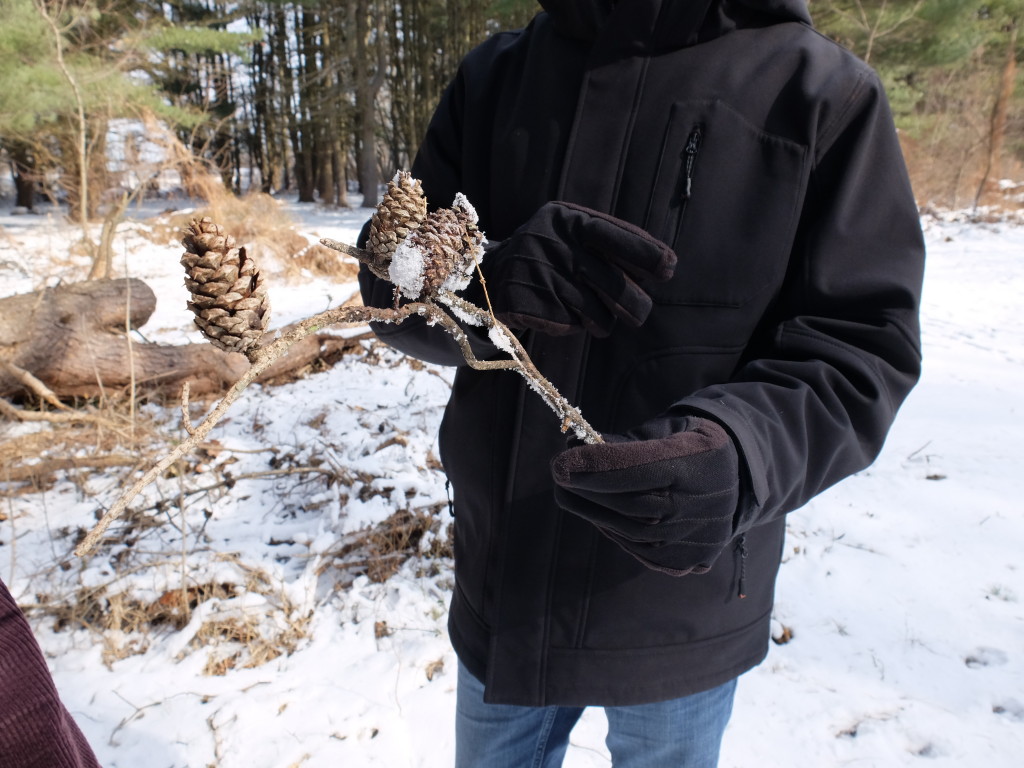
The other pine in our grove is the Virginia Pine, which can thrive even in the most inhospitable of soil, hence their colloquial name, Scrub Pine. On our walk, Eduardo gave me a little lesson on how to identify male and female pine cones. Female pine cones tend to be round and stout, while male pine cones grow more elongated and cylindrical on lower branches. Female cones grow in the upper branches of most conifers, where they may be fertilized by pollen blown on the wind.
You can tell if you’ve found a Virginia Pine if the needles are clustered in bunches of two, as opposed to the five-needle clusters of their White Pine neighbors. Pinus virginiana is also sometimes referred to as Jersey Pine, representing the northern end of their typical growing region.
Colorado blue spruce (Picea pungens)
As you might have guessed from its name, the Colorado Blue Spruce is non-native to our region, and is often planted as an ornamental specimen, as is the case for this one in Founder’s Grove. The outer edges of this conifer are where you’ll find the bluer bits of its foliage, which blend oh so beautifully into the background of a pale mid-winter sky.
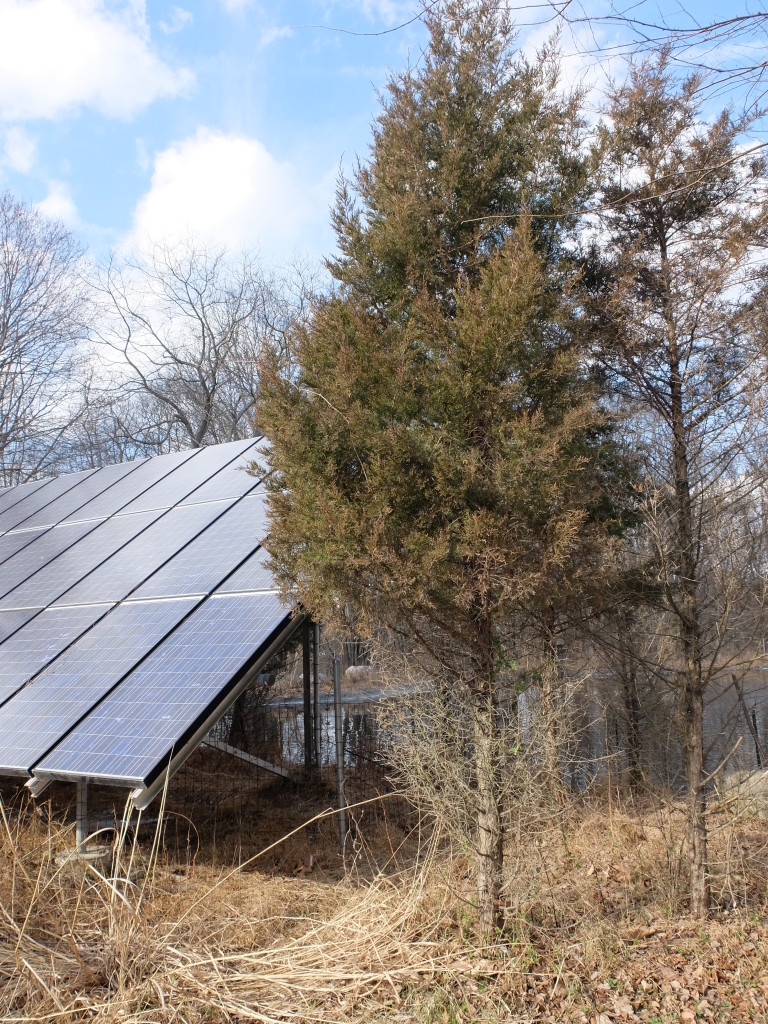
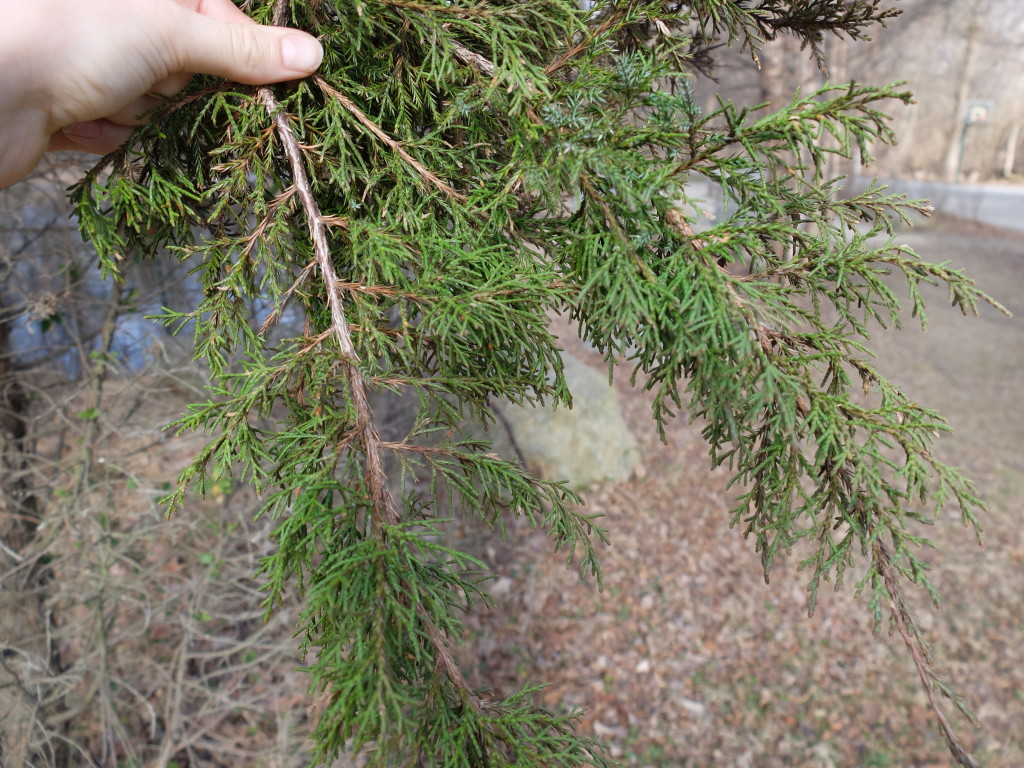
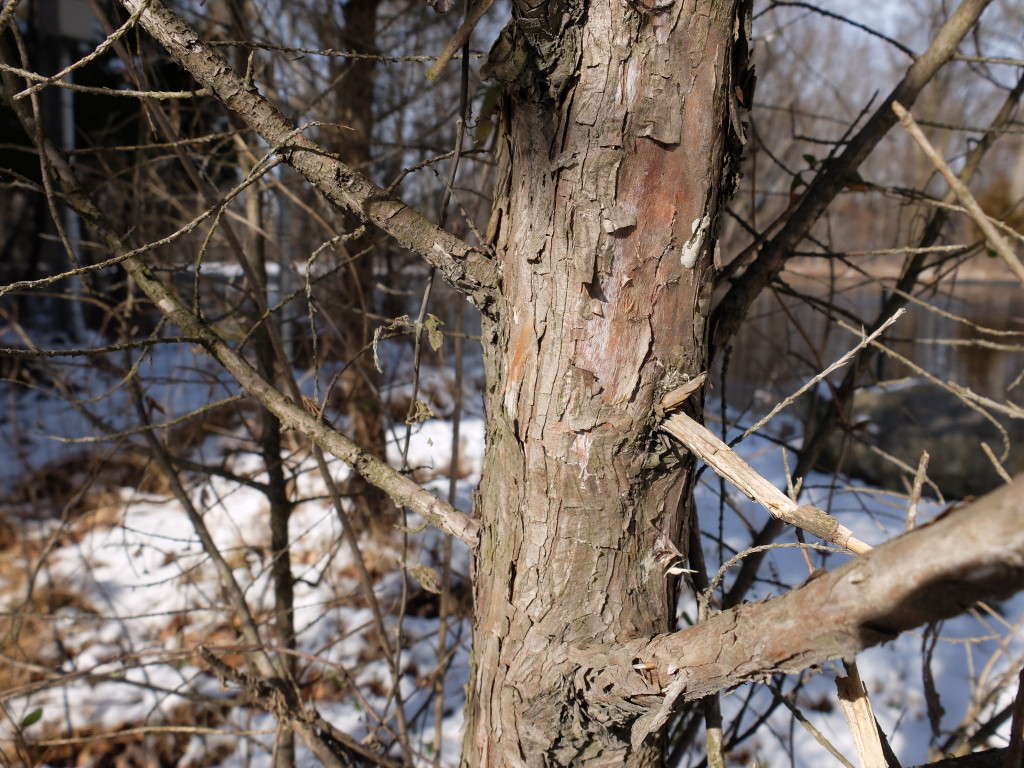
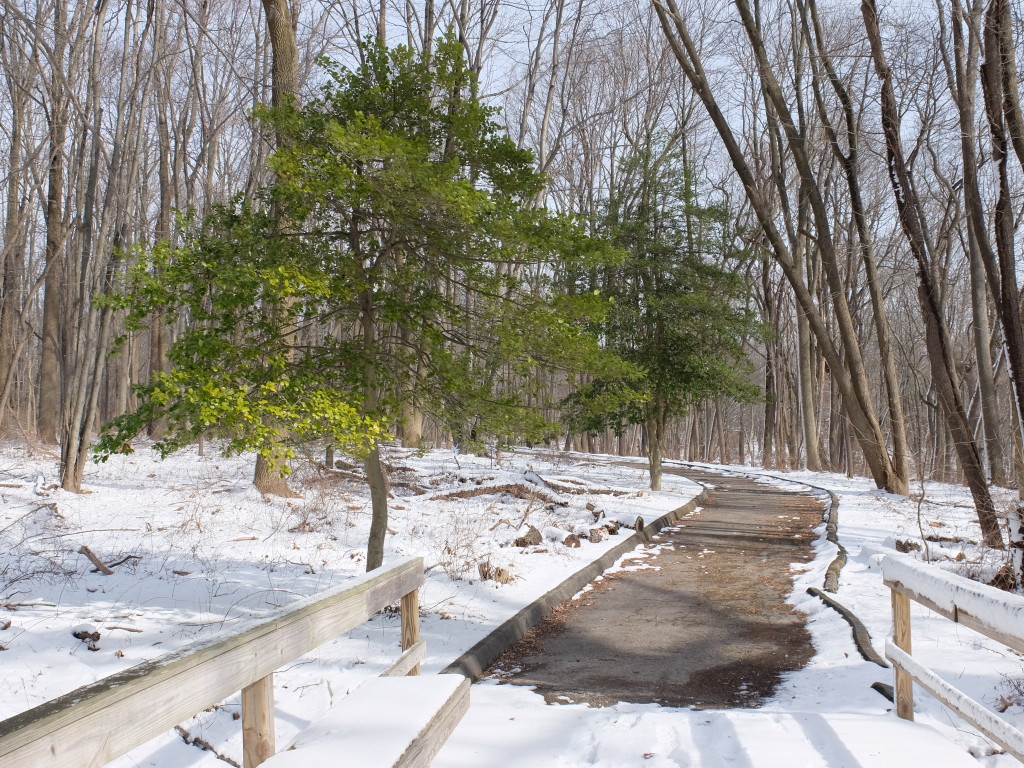
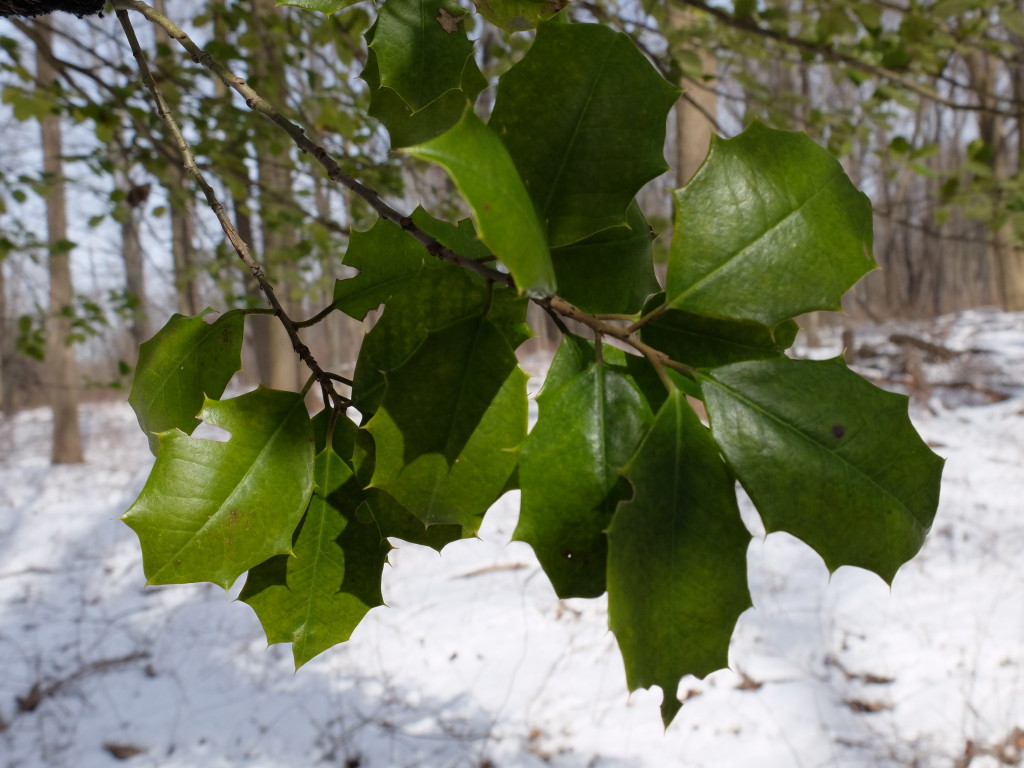
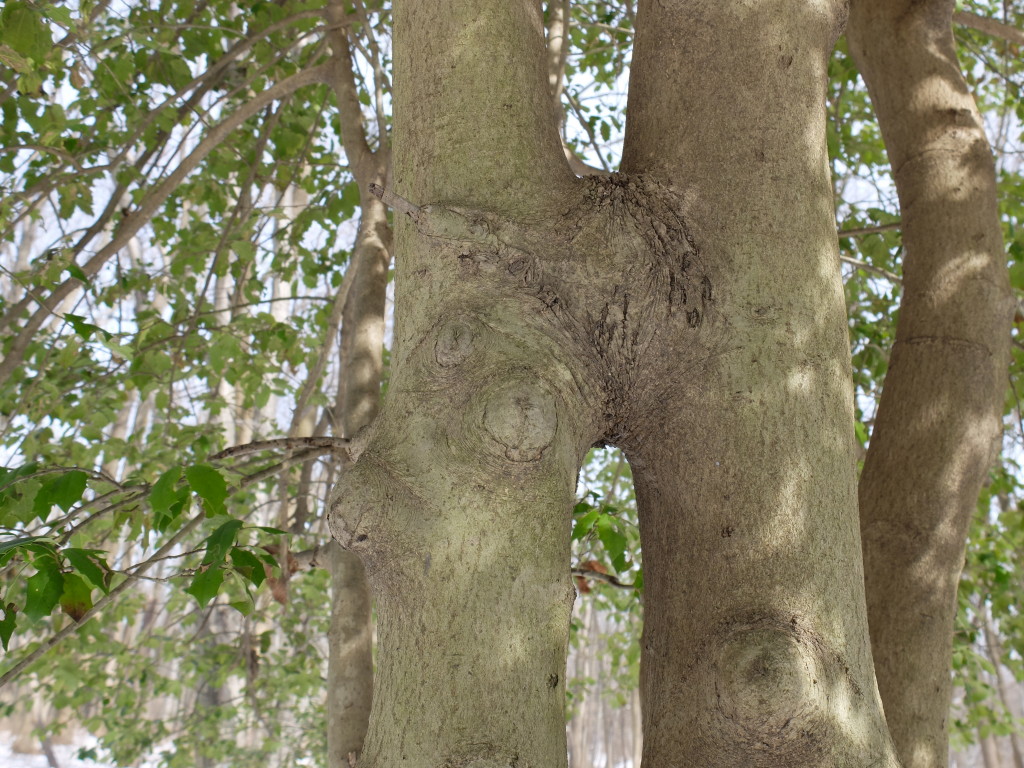
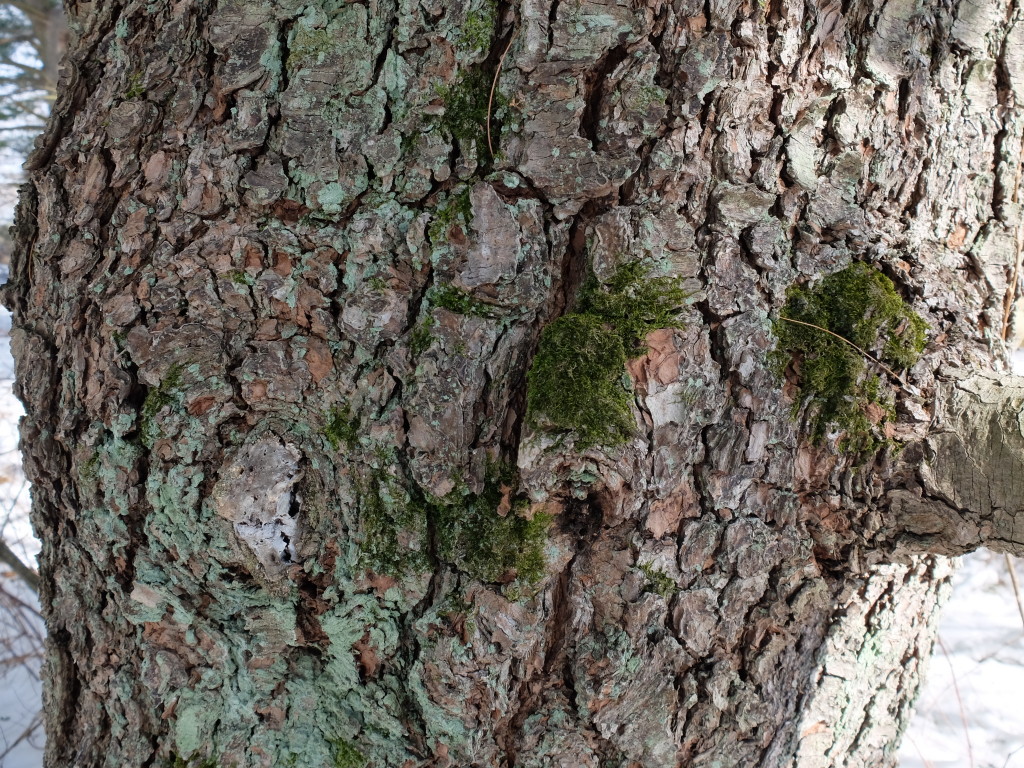
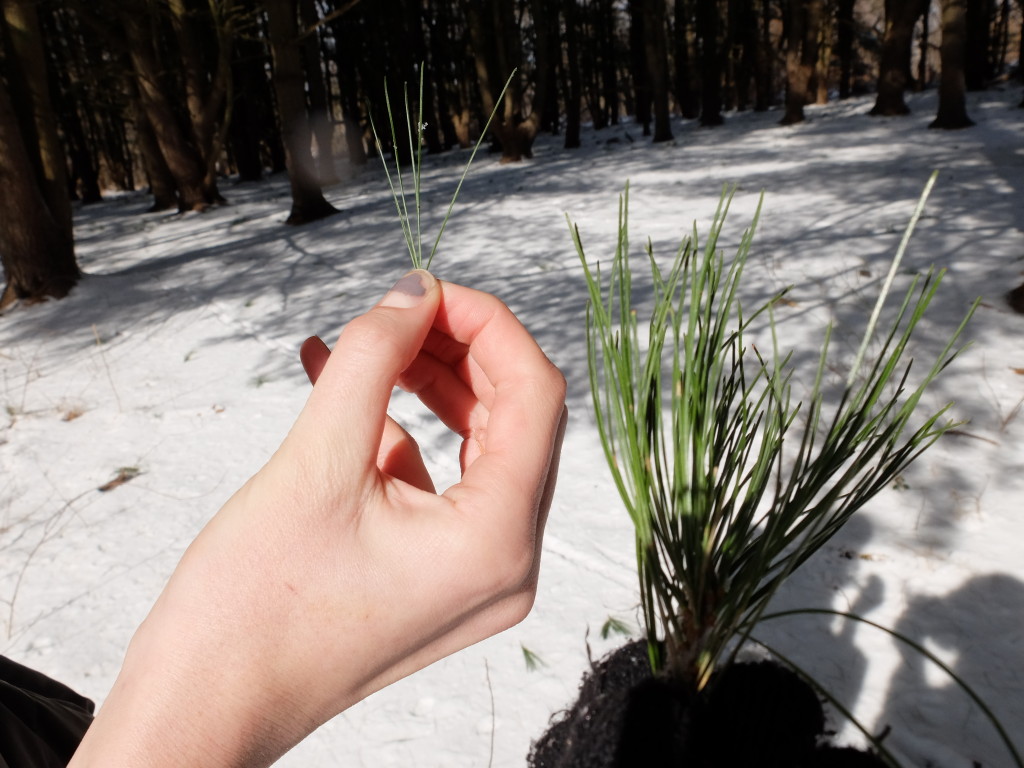
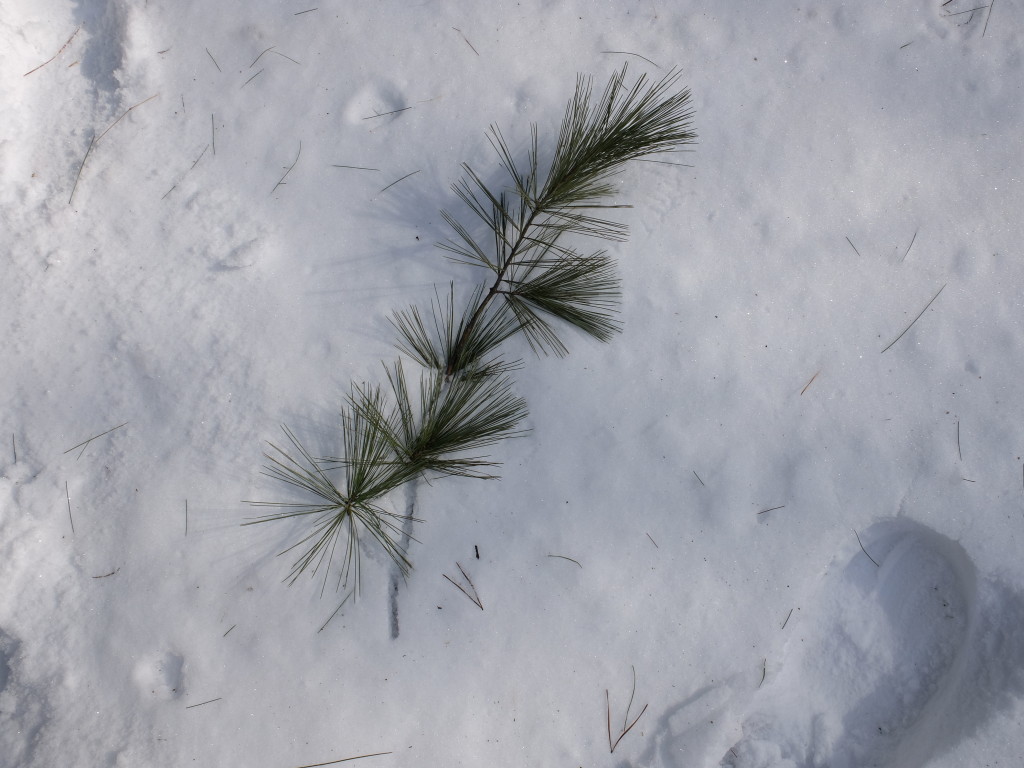
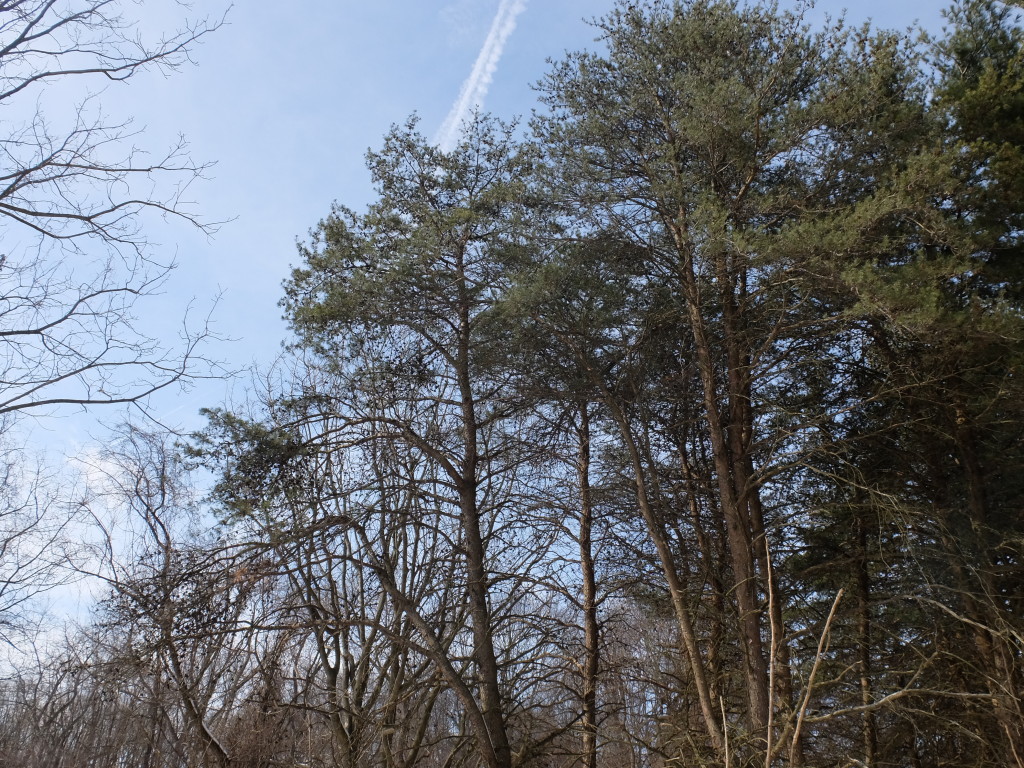
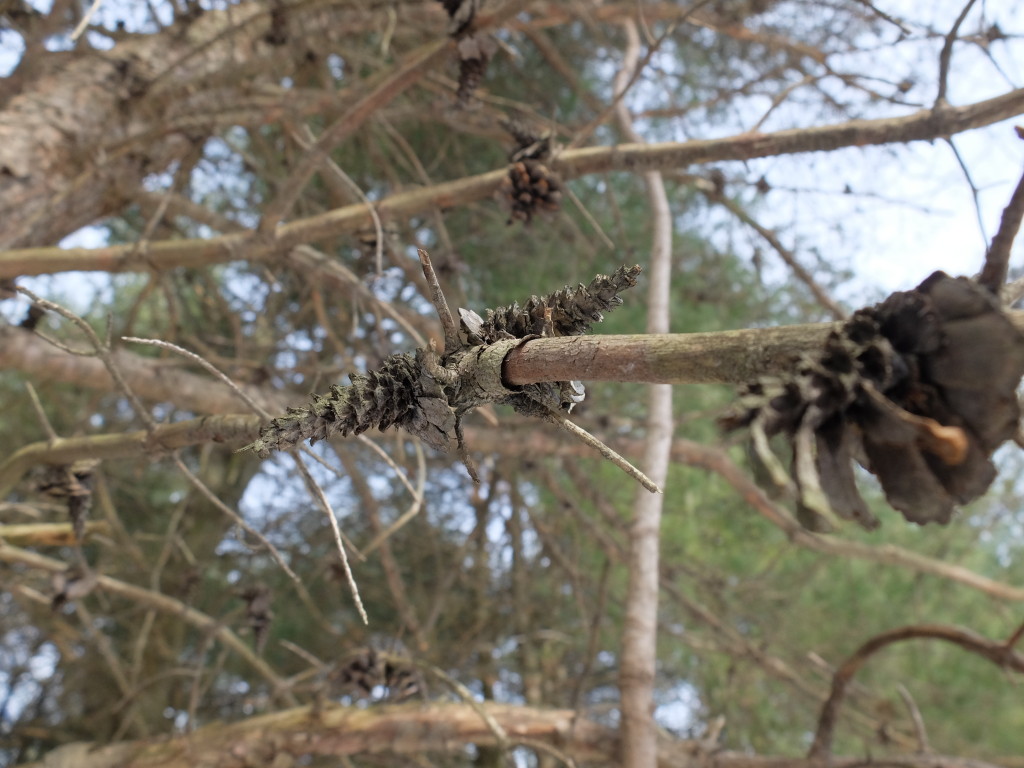
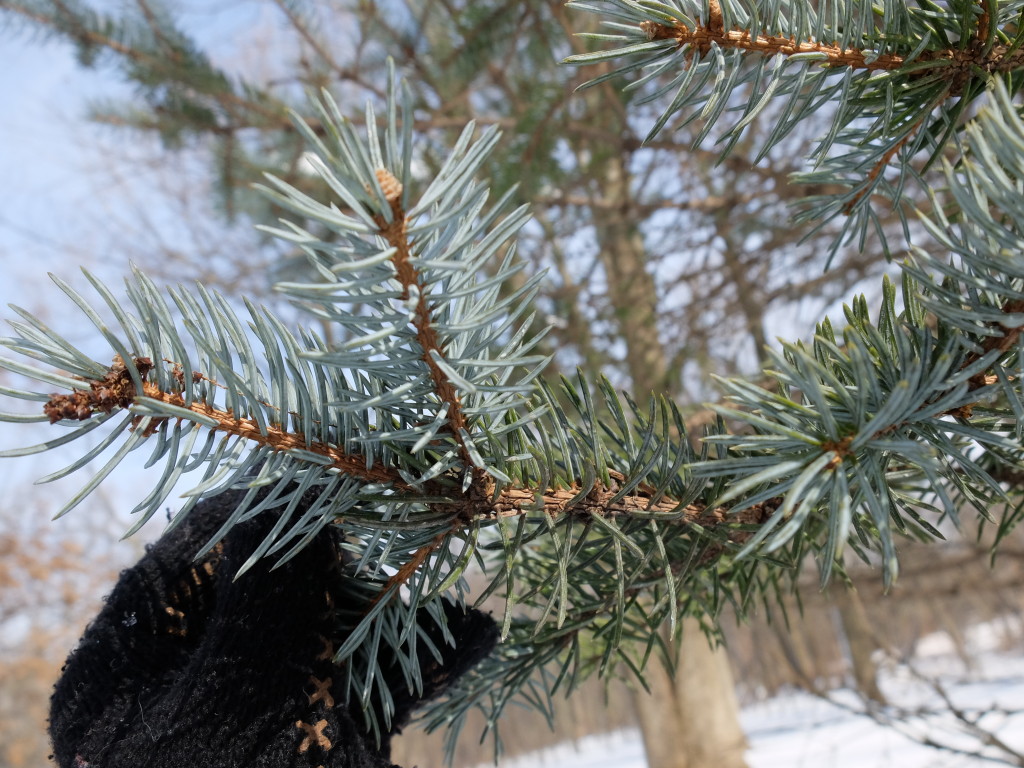
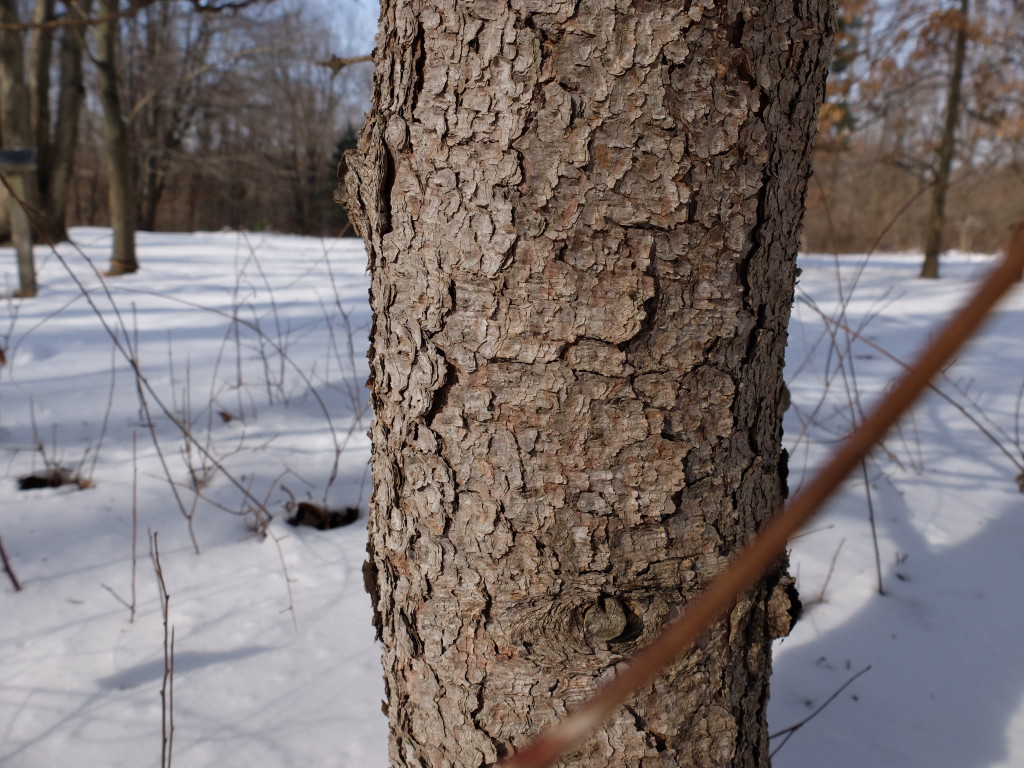
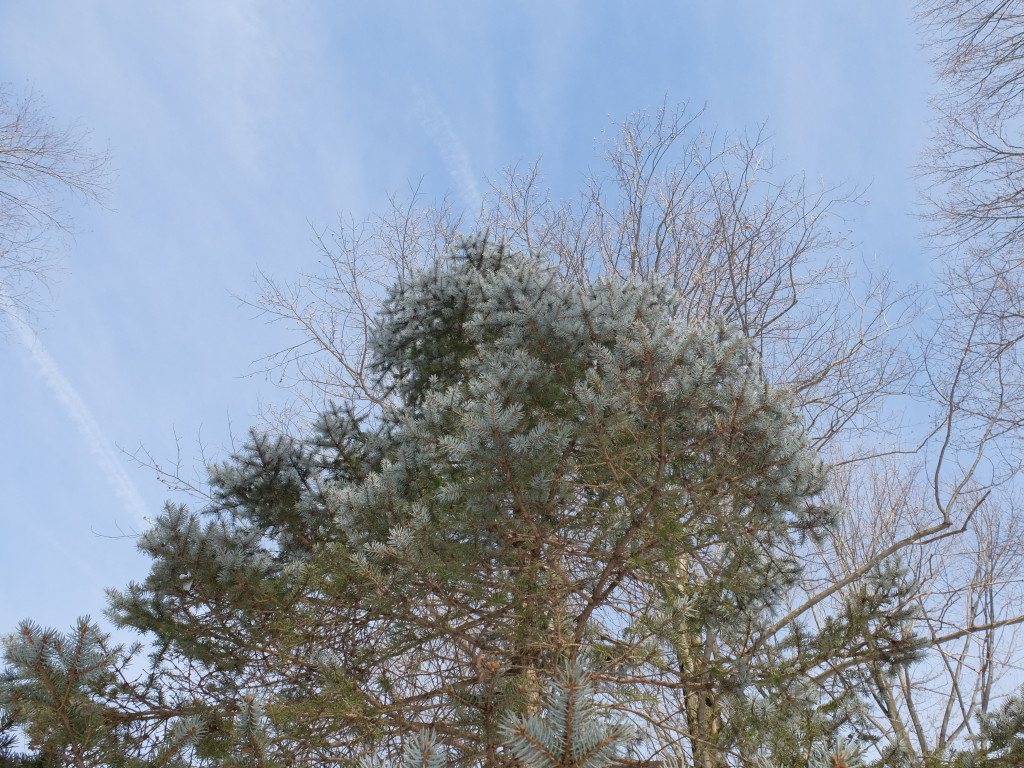
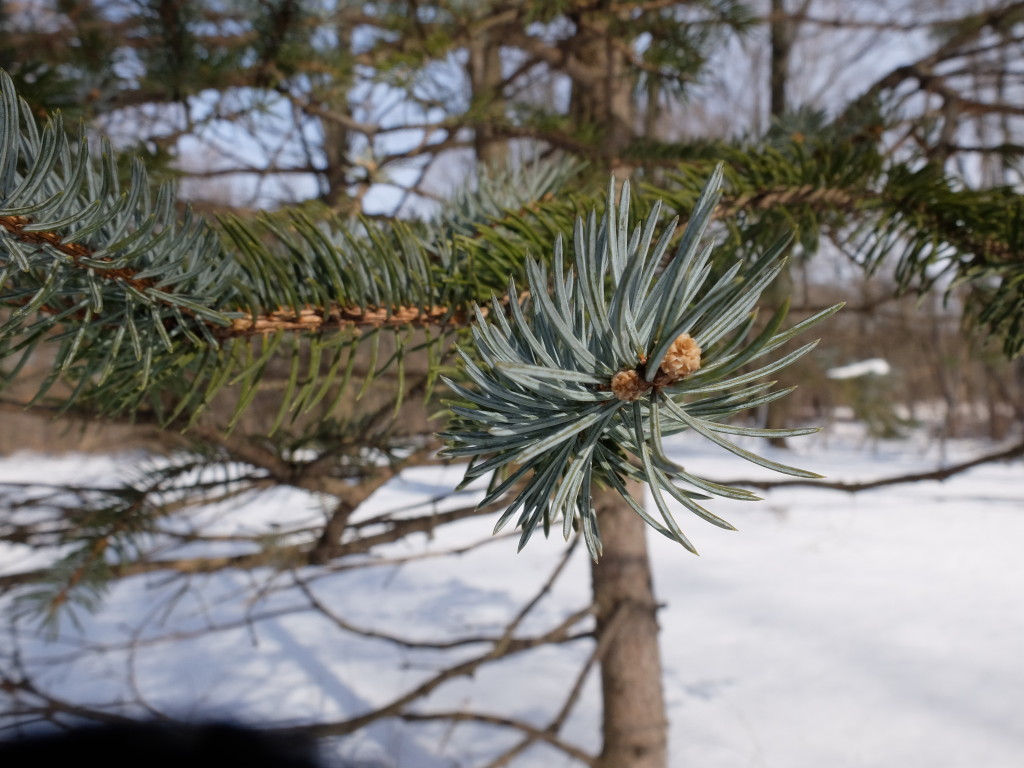

Great article! I’ll never look at evergreens quite the same again. Thanks for the insight.
The Holly tree is in an “H” for Holly!! You forgot to include that part
Nice article Jenny Ryder! Very informative…
Great article, Jenny!